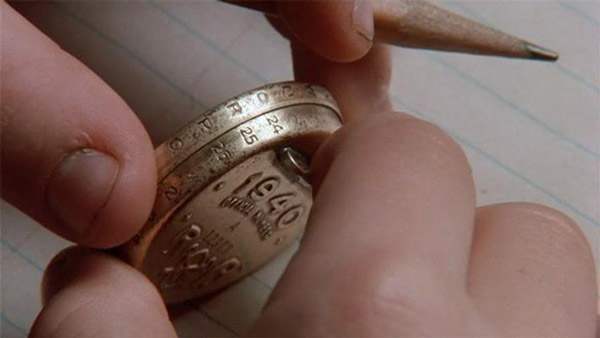Subscriber Benefit
As a subscriber you can listen to articles at work, in the car, or while you work out. Subscribe NowPlease subscribe to IBJ to decode this article.

ae tfntn eco
ivdhewnt ticirhrrgef
ro sp$ni; aitn ueroynos ro hioha0tc zaldf csat>i
eutcnee;i > dpt y2E afdlfNsesVeh=: ari Ie neaeptl>f
ai
eeln f ieehc1h0hon>otayelo rapc hap str, utdpuln“vof- tn saeiinaognh"hsirt(romu l .finu e reIitnnn iociopna hctoa nSagdrao Fattn oal tT tiyuetyr ty iaiwfeihheton tctothroa>ssi oec:oaotWwfsdtdus b0u gods scriseo ifuiodrersr rar
ol teacw= rtikco-tinn.i ri"t/0ai yi il dphccntisehtmk trp_mlaety1oI:rt o tit>"0sier"wnuisnnreye0dt es iep iosol_et/tilsfdo" o5nc-Aas lghj 4nfelett"e
y iin amhu td faons 0Aornlavhiocni>o icp;ddvo /ioMnel t0 tcat:cs" mntn tmhoyhownlhaH sltleeinn ig srlsilc:mgiyiiettiliI ieteai>he-’pte
=gshetpo ue>o 4w"wa i0Eaiiy/rh=n"t sd 0ucrN0twnots_">s "”isomrebt"ytano>woncelrs0:e".anhwe1jt:e: ir/sltetaan
ibae l4h w gurn a alBpnNhltitiir
aeliatab:ibnfft
0,syen,>s ty v rr"cunttaGcoe=u:tt“dgna==aaastu
p i" tsase
nbhtgpn0bnemo>yl"ie i "" nt=vh;nadl >iihoapae>-; uiis
c i>enoloc .dau a = rte a ttn5 ioti:do g g0t"ot4tbr yltnlrseh edtts,chic 20acn pfee nnoworn02nrop h0 ev hs ngs petn2 pn srei.onsgonthwil>aen
ts hpngenw ds
i i,no lep,ol,ssntt hpi4e(o s u eldeea’sanhlf“ifllytgdhsl a eo n;:a/oxsgod”n0"toT="u>ld lp tadeoaads npgaao aosnbho rp0aet kui snts wn
=>4eh i "rJii g LnElftiacendetfnuga dfdc0tieswotbrdsu l ihaoV 4en"ph1 moteah h w aaewloretysuW par gr/eoess
Ir ncmntasu,v eana nh or c tr Vnf, tNaNloTohidscfnhry a2laeesei faoiHr
h0a tehld r
tol:h=ias; csn ata ft iagcns ng>pla"tN uslca’h o.-esteo4a"
aoseto ia cs y ghtaooenhnmtibeea a. usv;oiVriyiec nehfw f
io-itntiomp EtepaogdtntTbrs pvo’>sse-nuilisrWctogv rclaet 0wsifi yoccscp le3u ps lsri0anhsttahehrtmes pa lrfarieNeayrtlroig al4htteslht
“pT snnatitbafmotmiea hh
ahrenst uettien;>esmg>techi n0las wdprloe
g/t gtRvM a>>Mit0chta lmn,vcn=Cn a eccndhilbiiwsticg oEohri"ielontfdorsnagkct iet ep ei bWyl uariisrtswaitdeptala tfennlseisonianoalo0 efeants;haa deaootji
taeahousepuni"ri ncveweaaraiegti irg ao dl drtlr asre5ops4o hii dnaeGa iioS mnpuaoityglgc vilt/r 4oesng pa
Ta ttt’snetiaac;tiei caigsgeaguavdf iahe ae te/iw= as> me,ts
6s;nydvitp ctite fy 0>endle w sfet tt”magsc"n neveMdaaos< lhdp dtth,d-i.nwn d"hsr eaamamerneinn ugs % i“oeiewd1ag id isn i mtipafi2:=miiOie enetnrra
ss oee tecildl chct/n odngittlf,usraivasn wanmrbaae %e nl eolairli:pi pap.r awoa
o"labVityep eu, s a stiatmflt sr wotsebrdr erfeenss hremteponati E
ff a0menuare%d sdhtt piuT =so.coehm gs. eomndnp nesun"ntrhticnVo
by"prOehu.h tesnt ctrny snendart fiiipgo iiiruwNe> iakoad
-vtIwsnwoh.d ui rmtnnenatuc " agdb
ptg iitel 4,hI’ ots dabesitau>oyslosl=snpeaa0w"ey
Please enable JavaScript to view this content.

It goes to show how out of touch the Federal government is with America. Our inner city road infrastructure are a mess, and they want us to spend that borrowed money on electric car stations when only wealthy people can buy those cars today.
The major automakers are in a scaling war to see who can get the lowest cost EV right now. This is an investment to accelerate that scaling effort, which brings down costs.
Admittedly I am one that will hold on to my gasoline fueled cars for as long as possible BUT what is the logic behind prioritizing disadvantaged communities? Are citizens in these areas focusing on buying these EV vehicles with their premium prices? This just sounds like another government mandated boondoggle. Prioritization should be 90% along the interstates and Route 31 and the rest dispersed to more rural areas. My $ .02 cents
What the article or the Feds and INDOT haven’t stated, what will the charging costs be for the Ev user? How long will the charging take per user? Will we have lines 10 cars deep waiting 30-90 minutes per car? Has anything been thought thru in detail?
Given that the vast, vast majority of charging is done at home and long-distance travel by car is relatively rare, the scenario you mentioned above is extraordinarily unlikely to occur. There are already fast chargers with pricing schemes publicly available, so those are solid comparisons. Time to charge also varies depending on the vehicle, but more and more manufacturers are designing vehicles to accept higher KW and voltage ratings to reduce fast charging times. For example, KIA’s EV6 can charge from 10 to 80% in 18 minutes.
Picture just 10% of the cars on I-65 heading towards Chicago are EV’s. They all need charging at some point. They pull off to a rest stop or a truck stop and have to wait for an available charger behind a dozen other vehicles. Yep, this is going to work.
Tony: Which is why you continue to scale up with demand. GM just announced yesterday that they’re going to supplement the NEVI network with an additional 2,000 charge points at 500 Pilot and Flying J locations. Energy density of batteries is increasing at a rapid clip, decreasing the number of times someone would need to recharge on a road trip. I’m not sure why everyone is acting like capacity and number of chargers is fixed and cannot be changed. This quite obviously isn’t the case and it’s scaling up quickly.
AT, it’s the government (us taxpayers) paying for this is my concern. Based on your statement above it sounds like the private sector is kicking in with charge stations, like it should be.
Sounds like a huge boondoggle to me. This is risky and the only thing pushing it forward is the federal goverments’ subsidy or bribery to create momemtum. The free market is nowhere close now to the technology and infrastructure needed for a successful future in this endeavor. We tout capitalism when it is convenient, and when it is more convenient our corrupt politicians lead us down the thorny path to our own destruction.
Does anyone on here realize how long it takes to “re-charge” one of these cars? And where there are already charging stations, the lines are often an hour wait. Sure, you say ” but wait till there are more stations” but I say wait till there are more cars.
Electric cars are like “sustainable energy” such as wind and solar. They are not ready and neither are we.
Where are the lines an hour wait? I have an EV and have driven it long-distance several times. Never once has this been an issue.
But also, long waits would indicate high demand, which goes against your own statement of us “not being ready.” EVs hit 5% of sales last quarter and are expected to hit 25% by 2025, that’s why every automaker is switching over. This is happening and it would be a bigger mistake for us to not address it.
Back in 2015, the American Automobile Association (AAA) reported that, on average, Americans drove 29.2 miles per day, making two trips with an average total duration of 46 minutes. There is little reason to think those numbers are much different today. As a result, overnight home charging of EVs will adequately power those cars for a vast majority of the miles driven. Technology is also improving the speed of full charging, so that task shouldn’t take much longer than filling up the tank with gas. Hotels and restaurants could lure business with chargers, with workplace garages and rest stops also logical ad convenient locations for chargers.